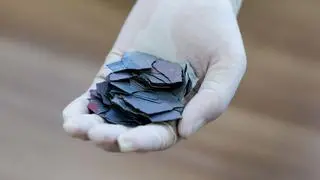
Ashwin C Muthiah, Chairman, SPIC
Southern Petrochemical Industries Corporation Limited (SPIC) plans setting up export facilities for green ammonia in Thoothukudi, Tamil Nadu. SPIC’s chairman Ashwin C Muthiah recently held discussions with Susanta Kumar Purohit, Chairperson, VO Chidambaranar Port Authority, on setting up export facilities for green ammonia and enhancing berth facilities to handle 4.5 million tonnes of cargo of SPIC in the near future.
The chairperson also shared upcoming port upgrades like dredging the channel and inner harbour to handle 15.50 m draft vessels, construction of Berth-10 for handling bulk cargo and converting Berth-7 into a multi-cargo facility, according to port sources.
No further information was shared on the project.
Meanwhile, SPIC reported a consolidated net profit of ₹67 crore for the first quarter ended June 30, 2025, as against ₹63 crore in the corresponding quarter of last year. Revenue was ₹771 crore (₹751 crore). The results include the performance of two joint venture companies – Tamil Nadu Petroproducts Limited and National Aromatics and Petrochemicals Corporation Limited – and two associate companies – Tuticorin Alkali Chemicals and Fertilizers Limited and Greenam Energy Ltd.
During the quarter ended June 30, 2025, the production and sale of urea of the company were 1.92 lakh tonnes and 1.86 lakh tonnes respectively, the company said.
Muthiah in an announcement to the stock exchanges said SPIC’s Q1 FY26 results reflect buoyant performance with a clear focus on driving higher profitability. “Alongside steady sales growth, the healthy increase in profitability over the previous quarter highlights our emphasis on operational efficiency and reducing input costs,” he said.
Giving a perspective on the fertiliser sector, Muthiah said between April and June 2025, India’s fertiliser industry built on its position as the world’s second-largest consumer and third-largest producer of fertilisers. Following the record-breaking domestic urea output of over 314 lakh metric tonnes in 2023–24, the country maintained near self-sufficiency in key segments, with about 87 per cent of urea and 90 per cent of NPK requirements being met through domestic production.
The high-growth momentum in fertiliser manufacturing is reinforced by government-backed initiatives aimed at enhancing productivity and reducing import dependency. These developments strengthen the foundation for sustainable agricultural growth, Muthiah said.
More Like This
Published on August 16, 2025

